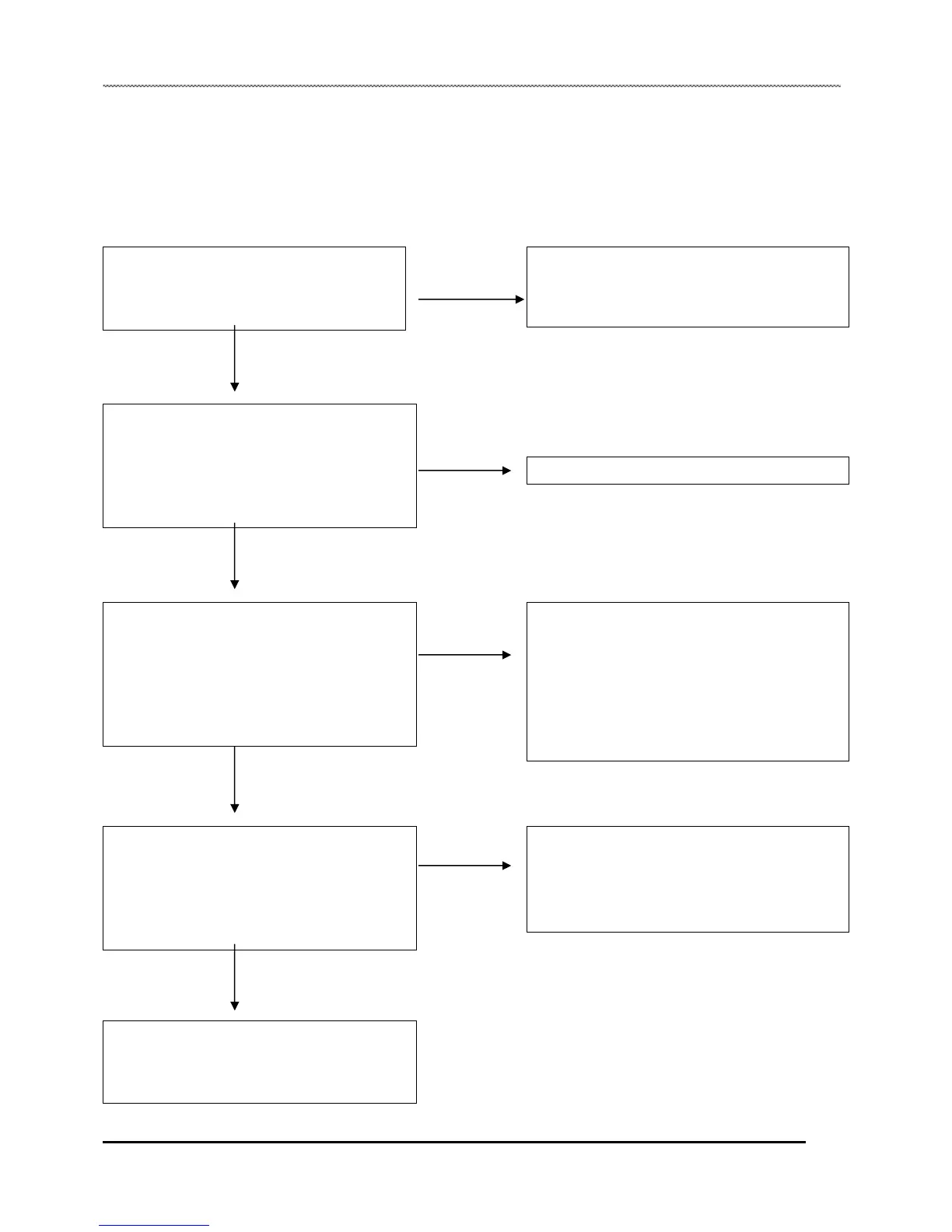ELECTRICAL
CHARGING SYSTEM
Charging System Testing
Whenever charging system problems are suspected, proceed with the following system checks:
Using a volt meter, set it to read D.C. volts,
measure the battery open circuit voltage
(across the positive and negative posts). Is
the reading 12.4 volts or more?
NO
Remove the battery and properly service.
Reinstall the fully charged battery or a fully
charged shop battery.
YES
Meter Setting: DC Volts
With the transmission in neutral, start the
engine and increase RPM to between 3000
4000. Read battery voltage with the
Voltage readings should start to increase
towards 13.0 V D.C. Was an increase noticed?
NO
Check for a system current draw.
NO
Meter Setting: AC Volts
Disconnect the wire connector between the
regulator / rectifier and stator. Using a volt
meter perform a stator output test.
See the test procedure detailed in this chapter
Does stator AC output meet specification?
under Stator / Alternator Tests.
NO
Perform the resistance tests detailed in this
chapter under the Stator / Alternator Tests. If
stator magnets, stator coils and stator wire
harness for damage. Repair or replace any
damaged components. tests good, inspect the
flywheel
YES
Meter Setting: DC Volts
Reconnect the alternator wires. Note: Red wire
must be connected to harness. Battery voltage
must be present on red wire terminal on
harness side of voltage regulator connector.
Is it?
NO
Check regulator / rectifier connections and
ground, battery connections, main fuse and
connecting wires. Repair or replace faulty wiring
or components.
YES
If all of the previous tests indicate a good condition,
but the charging voltage does not rise above battery
voltage at the connector or terminal board, replace
the voltage regulator.
